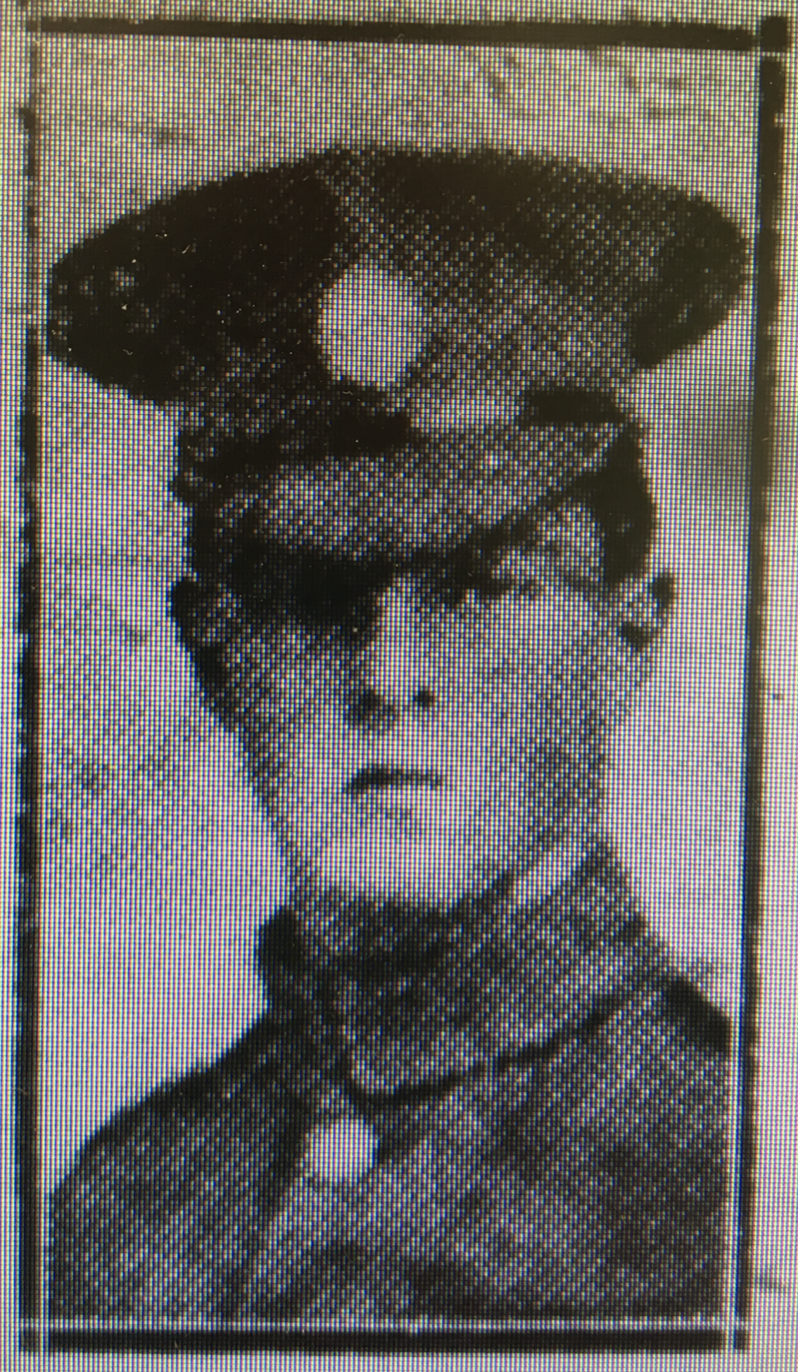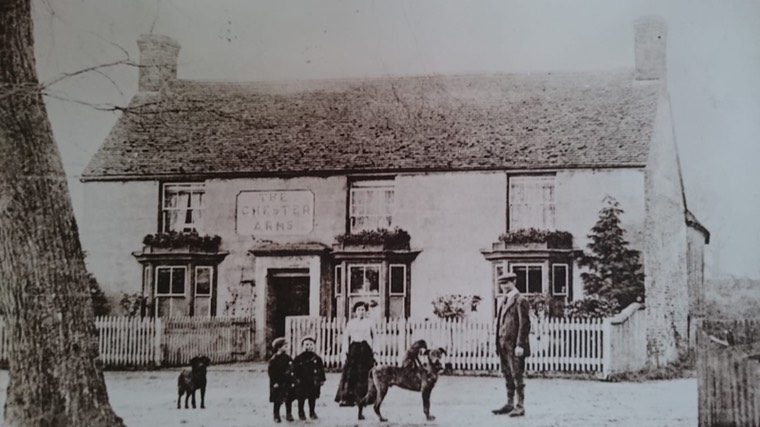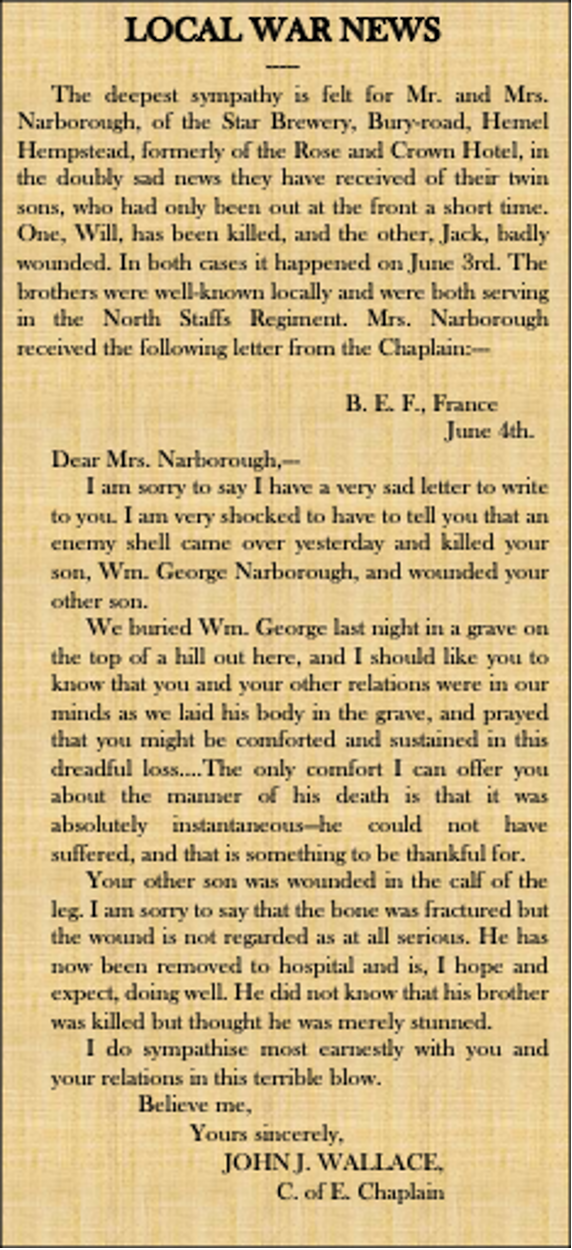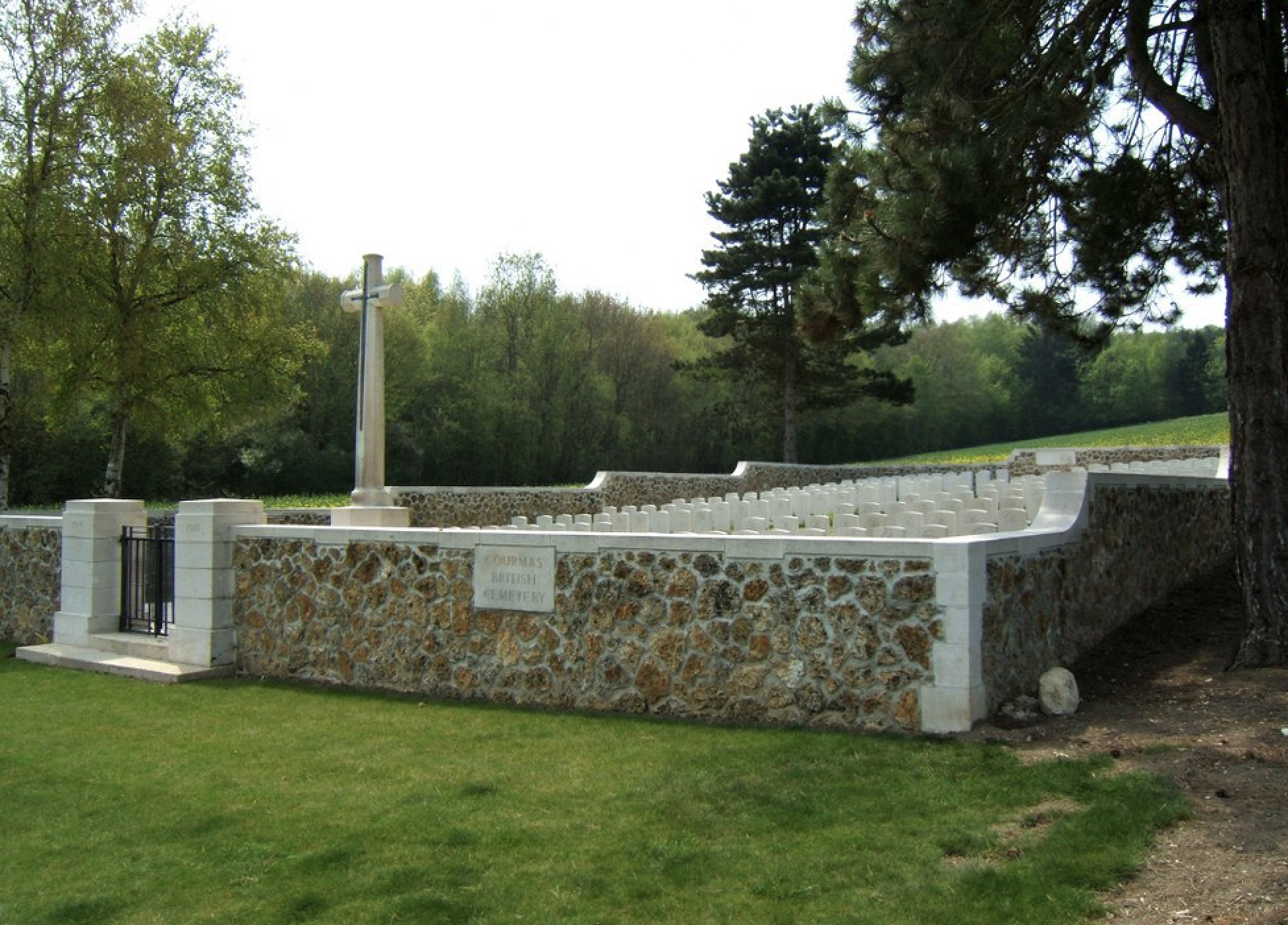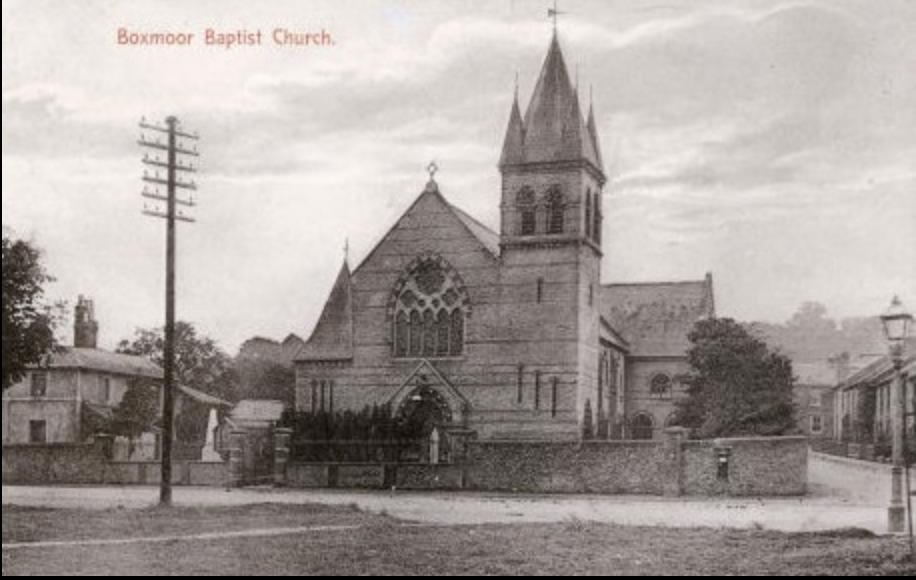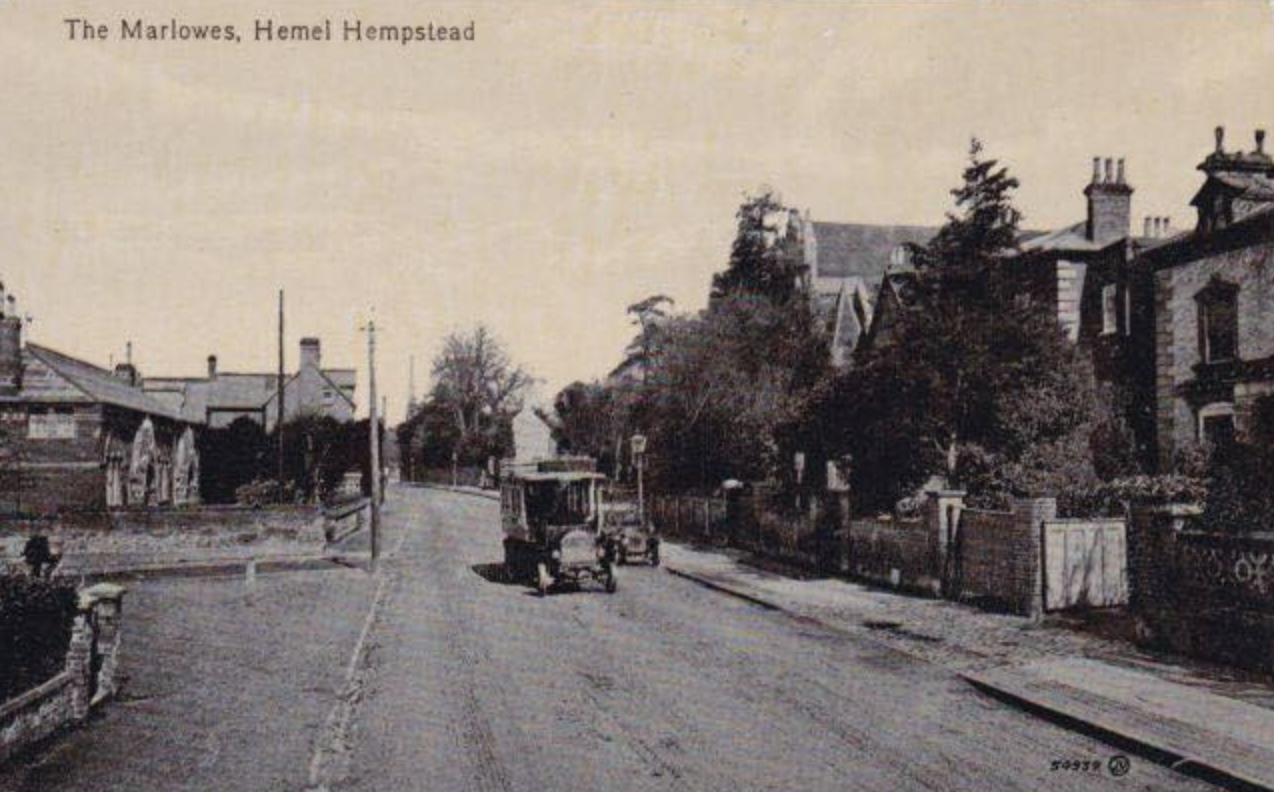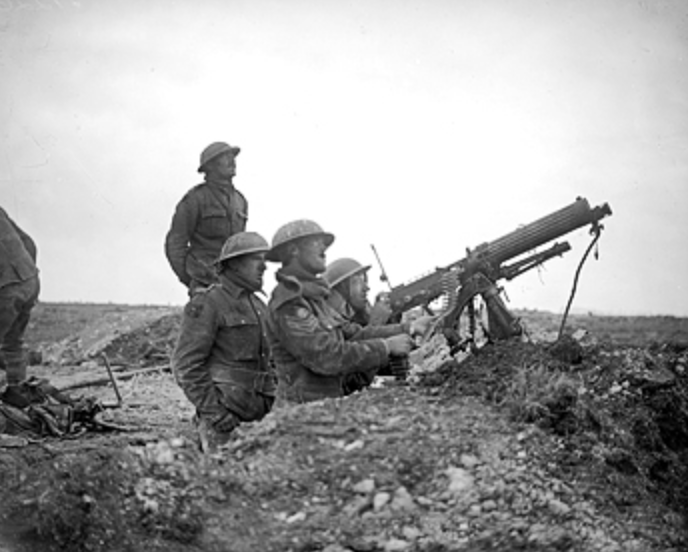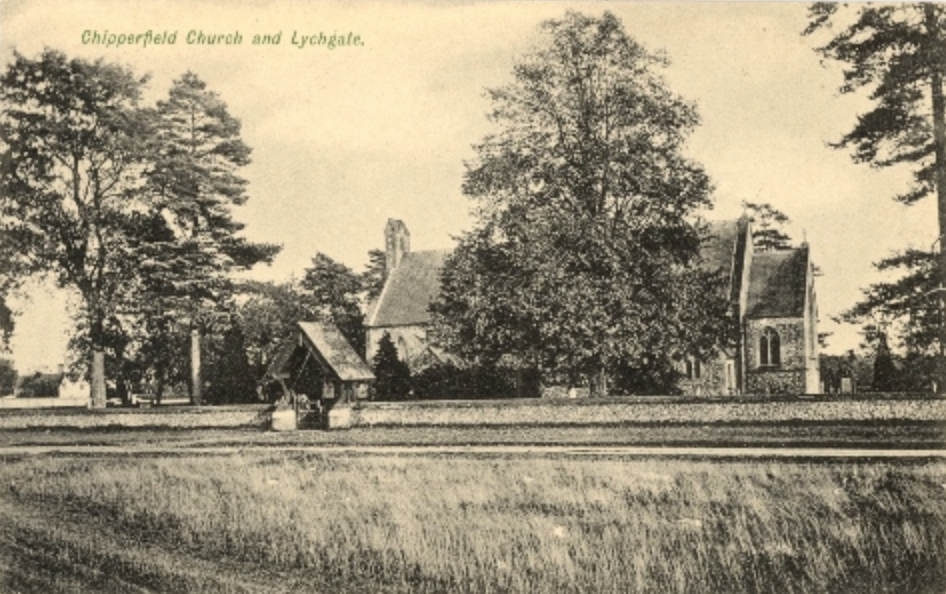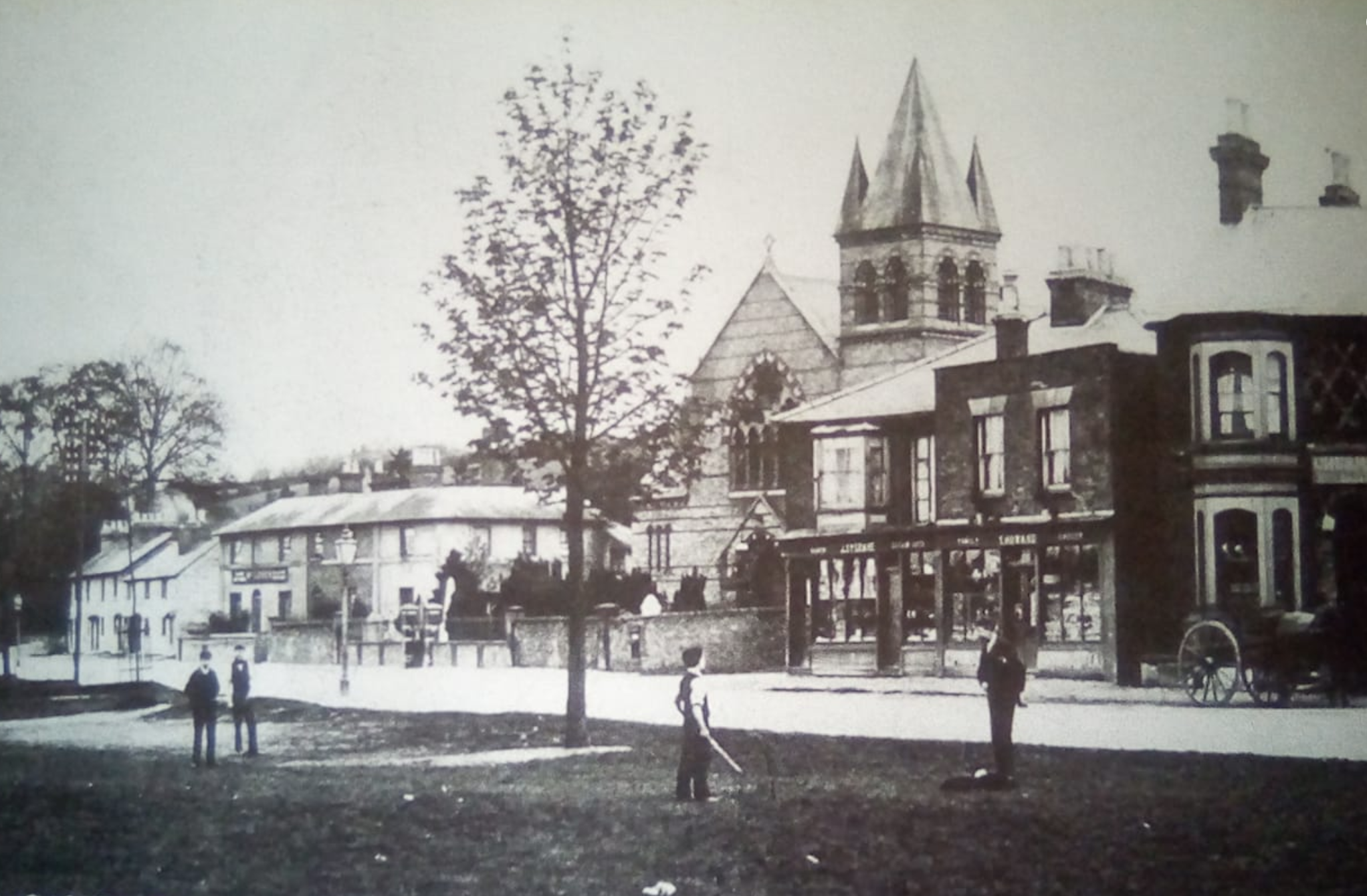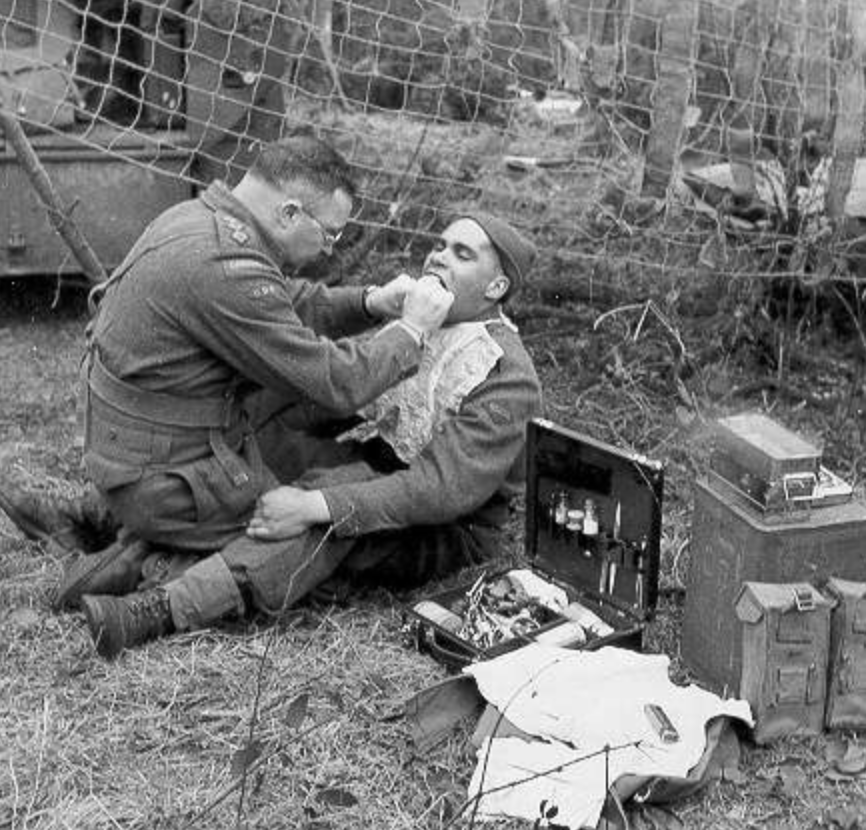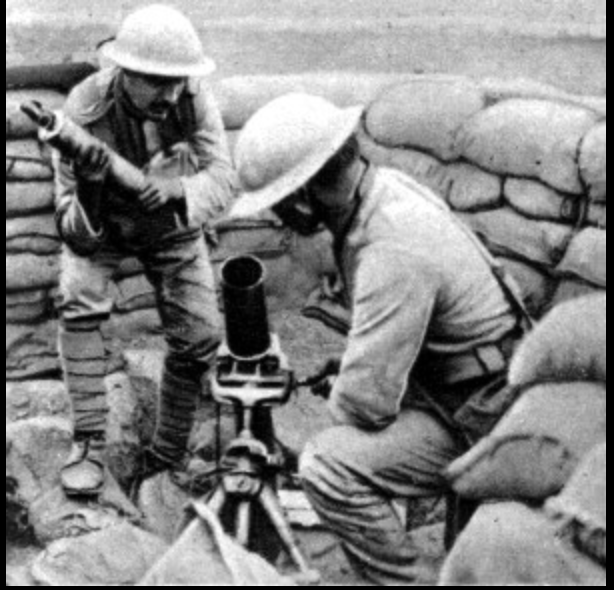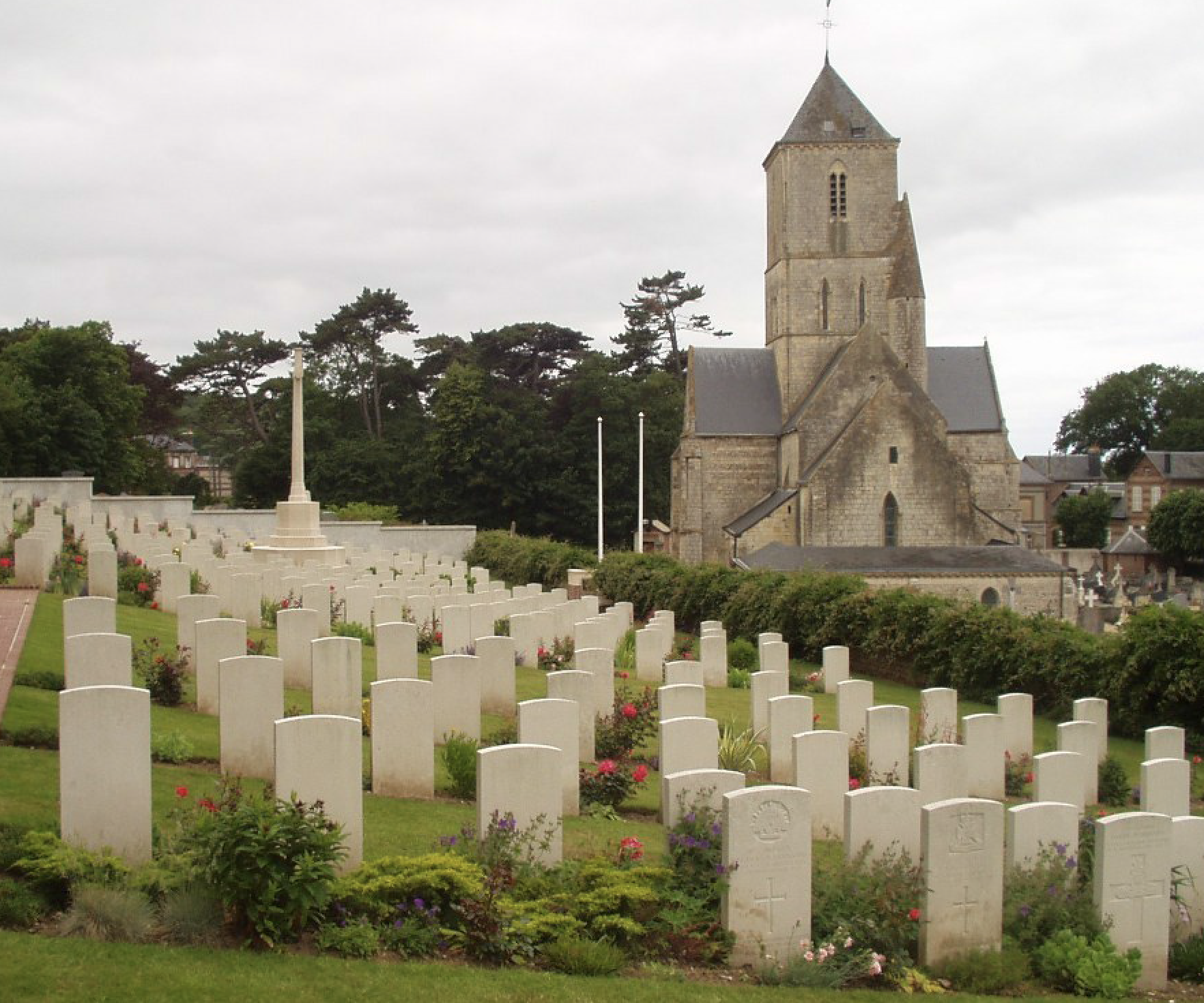Fallen in June 1918:
William George Narborough
Harry Sear
Thomas Allen
WILLIAM GEORGE NARBOROUGH
55149 Private
8th Bn., North Staffordshire Regiment
Killed in Action Monday, 3rd June 1918
Remembered with Honour, Courmas British Cemetery, Marne, France, Grave II. H. 6.
William George Narborough, known as Will, was born in the small village of Chicheley, Newport Pagnell, Buckinghamshire in early 1899. He was the younger of twin brothers born to William John Narborough and Martha Elizabeth Ransom, and his siblings were his brother Jack (John) Andrews and a younger sister Amy Catherine.
His father was a "Licensed Victualler" and landlord of the Chester Arms in Chicheley at the time of the 1901 Census and he raised his young family there before moving away from the village sometime around 1910.
William John Narborough moved his family to Hemel Hempstead in 1911, when he became licensee of the Rose and Crown pub on the High Street in Hemel Hempstead and took up residence nearby, at 25, Bury Rd. William John would eventually acquire the Star Brewery opposite Bury Mill.
William went to Watford to attest on the 10th January, 1917 when he was a month short of his eighteenth birthday and he enlisted with the Bedfordshire Regiment. He then had a short wait as a Reservist, before he was called up two months later for his medical at Whitehall in London on 15th March. Details recorded on his Service Record state that William was 5 feet 4½ inches in height and weighed 131 lbs (9st 5lbs) and he was passed "Category A". He was sent to Harwich for basic training four days later and subsequently moved to Colchester.
During his training William qualified as a "Lewis Gunner" in October 1917 and was posted to 1/1 Herts Regiment in preparation for his transfer overseas. He left Dover on the 5th April 1918 and disembarked at Calais the following day before joining his Regiment at a Base Camp.
By the time he arrived in France the war had reached a stage were new recruits were sent to the Regiments most in need of reinforcements regardless of the unit they had originally joined. For William, this meant he was immediately transferred and posted to the North Staffordshire (Prince of Wales’s) Regiment. He went initially to the 1st North Staffs before being sent to the 8th Battalion in May 1918.
By the end of the month William was in the Front line at Méry-Prémecy to the west of Reims and it was here that he was killed in action on Monday, 3rd June 1918. William had only been in France for sixty-one days when he was died.
Following his death a letter was received by his parents from John J. Wallace the Chaplain buried their son, and it was subsequently published in the Hemel Gazette. (see extract)
He is Remembered with Honour in Courmas British Cemetery, Marne, France, where he is interred in Grave II. H. 6.
He was only 19 years old when he died.
William was eligible for the British War Medal and the Allied Victory Medal.
Pte. William Narborough (Photo: The Hertfordshire, Hemel Hempstead Gazette and West Herts Advertiser)
The Chester Arms, Chicheley where young William spend his very early life. (Photo: https://www.chicheley.com)
Extract from The Hertfordshire, Hemel Hempstead Gazette and West Herts Advertiser 15th Jun. 1918)
Courmas British Cemetery, Marne, France (Photo: CWGC)
HARRY SEAR
21985 Private
"C" Coy. 5th Bn., Machine Gun Corps
Died of Wounds Tuesday, 4th June 1918
Remembered with Honour, Tannay British Cemetery, Thiennes, Nord, France, Plot 3. Row A. Grave 6.
Harry Sear was born in Hemel Hempstead, Hertfordshire in early October 1894 and baptised just a couple of weeks later on Wednesday, 17th. He was the younger son of Walter James Sear and Sarah Ann Walker and his older brother was named for his father Walter. He had another sibling who died young. His mother Sarah Ann died in early 1917 aged forty seven and his father a year later in January 1918.
When Harry was born his father was working as an "Cab Driver", but soon afterwards found work as a "Groom and Coachman". The family lived initially in Boxmoor at 11, Russell Place before moving to 18 Herbert Street when the children were still young. By the time of the 1911 Census, they had moved to 6 Bath Street in the town just opposite Marlowes (Carey) Baptist Church and on the same street as the Public Baths.
Harry left school in 1913 and went to work with John Dickinson & Co Limited in Apsley Mills where he was employed as a "Wire Sticker" and it was from here that he enlisted with the Hertfordshire Regiment three months before the outbreak of the war.
He was immediately mobilised when the war started and he went to France on the 6th November 1914 as part of the "Old Contemptibles", the British Expeditionary Force. Harry saw action in the Winter Operations in early 1915 before he volunteered to retrain as a machine gunner with the newly formed Machine Gun Company (MGC).
He was sent to the Machine Gun School at Wisques in France, in the Spring of 1915 and having passed his training he was posted to “C” Company in the 5th Battalion MGC late in the year.
By April 1916 Harry was with the 5th Battalion in the field and over the next three years he saw action across western France and Flanders. In early June 1918 he was in the trenches near Thiennes in France when “C” Company came under persistent heavy shelling for a number of days. At some point during this onslaught, Harry was fatally wounded and soon succumbed to his injuries.
He died on Tuesday, 4th June 1918.
He was commemorated on the John Dickinson & Co. Limited War Memorial at Apsley End where he had worked for three years before the War.
He is Remembered with Honour in Tannay British Cemetery, Thiennes, Nord, France, where he is interred in Plot 3. Row A. Grave 6. The inscription on his headstone requested by his father, Walter Sear, reads: “ONLY GONE BEFORE”
He was 24 years old when he died.
Harry was eligible for the 1914-15 Star, the British War Medal and the Allied Victory Medal.
Boxmoor Baptist Church on Russell Place, Harry was born in one of the houses to the right of the picture (Photo: http://www.hertfordshire-genealogy.co.uk)
The Omnibus is just passing Bath Street on the left where Harry lived before he went to war. The public baths are in the first building on the left (Photo: http://www.hertfordshire-genealogy.co.uk)
Lewis Machine Gun Crew on the Western Front (Photo: https://www.wakefield.gov.uk)
Tannay British Cemetery, Thiennes, Nord, France (Photo: CWGC)
THOMAS HENRY ALLEN
266850 Private
1st Bn., Hertfordshire Regiment
Died of Wounds Tuesday, 16th June 1918
Remembered with Honour, Etretat Churchyard Extension, Seine-Maritime, France, Grave II. E. 6.
Thomas Henry Allen was born in Chipperfield, Hertfordshire in September 1889 and was baptised in the local parish church, along with his older twin brother William, five years later on the 4th November 1894. He was the third of four boys born to James Allen and Eliza (Elizabeth) Dancer and his other siblings were; Emily, George, William and the youngest child Arthur.
His father James was an agricultural labourer, an occupation which meant the family frequently moved as James took up employment on farms throughout the district. By 1901 when Thomas was twelve-years-old, the family had moved to Redbourn, just outside Hemel Hempstead, and lived at Wood End Cottages.
It is not known what Thomas did after leaving school in 1902 but it is possible that he remained in Redbourn and like his father and older brothers, found farm work locally. It was during this time that he got to know the Bone family who also lived in the village and his eyes and eventually his heart settled on Emily the youngest daughter in the family.
Thomas and Emily Elizabeth Bone married in Hemel Hempstead in 1910 and shortly afterwards the young couple set up home at 96 London Road, Boxmoor. Just a year later in September 1911, Thomas and Emily had their first daughter whom they named Emily Edith Ellen. A second girl, Florence May, made an appearance in February 1913 and the Allen family was complete.
Thomas volunteered for service on the 23rd August 1915 when he enlisted at Hertford with the Hertfordshire Regiment and was immediately posted for basic training. For the next twelve months he trained to be a soldier and was then engaged in home defence duties. On the 3rd November 1916, he was mobilised and a day later embarked at Folkestone and sailed for France, and within the month he had joined his unit, 1st Battalion Hertfordshire Regiment near Neuve Chappelle.
Thomas had a miserable war according to his service records, and like many of his comrades suffered privations and illness which led to his admission to hospital on four separate occasions during 1917. In mid-January he reported sick and was diagnosed with Myalgia, acute muscle pain, which may have been due to the stresses and strains of soldiering. Needless to say it was incapacitating and he did not re-join his unit until early February. A month later he was back in hospital, this time afflicted by frostbite which was a sadly common complaint for men in the trenches.
He took a full month to recover before going back into the field. In early September a slight injury meant another few days in hospital, and finally in October, he succumbed to the most common medical complaint of the Great War, tooth decay. Ninety-eight percent of all soldiers who fought in the First World War had to undergo dental treatment for tooth decay at some point during their service. This could be severe and mean hospitalisation for prolonged periods, but this problem resulted in the development of modern dentistry treatment and techniques, primarily driven by the New Zealand Army.
Thomas spend five days under treatment before once again re-joining his Battalion. It must have been a great relief to him, that at the end of November 1917, he was granted two weeks home leave and returned to his family and friends in Hemel Hempstead. This would prove to be the last time that Thomas would see home and on his return to the frontline, he was assigned to a ‘Stokes Mortar’ unit attached to the 116th Light Mortar Battery in the Hertfordshire Regiment.
He served with this unit throughout the first few months of 1918, fighting in the Battle of the Lys in April and seeing continuous action in the trenches, albeit a relatively quiet period according to the Battalion War Diaries. During the month of June, the 1st Hertfordshires suffered a more torrid time and the number of casualties increased as the month progressed.
It is not clear exactly when Thomas was wounded, but he succumbed to his injuries and died on Tuesday, 16th June 1918.
Back home, his widow Emily received a pension for herself and their two daughters of twenty-five shillings and six pence, along with a gratuity payment of £7.0.0. Emily married again in 1921, three years after Thomas’ death, to Alfred Bass from Hemel Hempstead and with whom she had three more daughters. Fred Bone, Emily’s older brother was also killed in the war in July 1917, eleven months before Thomas fell. Fred’s biography also appears on this site.
Thomas is Remembered with Honour in Etretat Churchyard Extension, Seine-Maritime, France, where he is interred in Grave II. E. 6.
He was 29 years old when he died.
Thomas was eligible for the British War Medal and the Allied Victory Medal.
St. Paul's Church, Chipperfield where Thomas was baptised (Photo: http://www.hertfordshire-genealogy.co.uk)
London Road, Boxmoor where Thomas and Emily set up home (Photo: Public Domain)
Frontline Dentistry during World War One (Photo: https://www.cda-adc.ca)
Soldiers of the Portuguese Expeditionary Force loading a "Stokes Mortar" (Photo: Public Domain)
Etretat Churchyard Extension, Seine-Maritime, France (Photo: CWGC)
